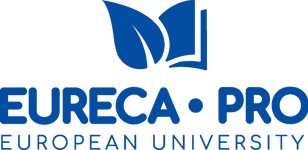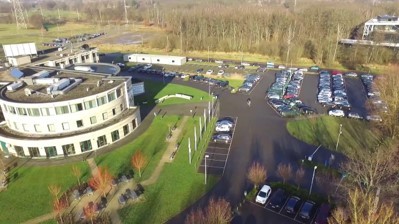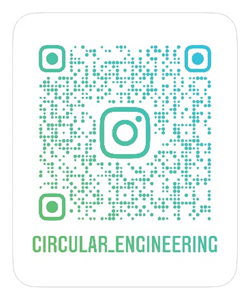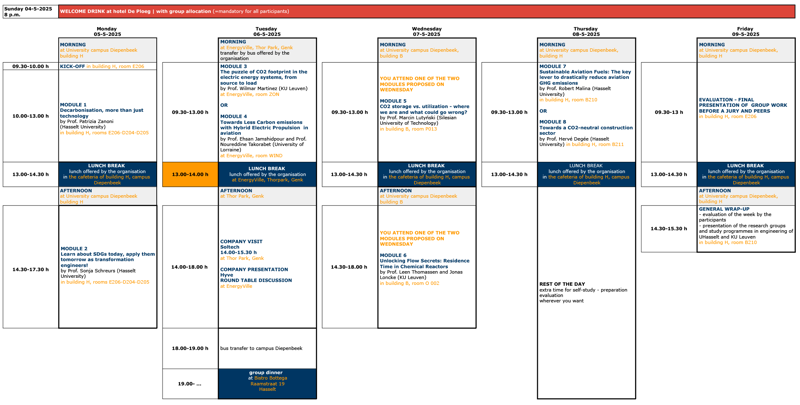SUMMER SCHOOL CEAD
Circular Engineering Across Disciplines
2025 Edition - Zero carbon solutions for hard-to-abate sectors
4 May-9 May 2025
Application closed


Let the recap movies from previous editions convince you
Circular Engineering Across Disciplines
Summer school CEAD
2025 Edition - Zero carbon solutions for hard-to-abate sectors
The 2025 edition of CEAD's Summer School on "Zero Carbon Solutions for Hard-to-Abate Sectors" will address the pressing challenges and opportunities in decarbonizing some of the most carbon-intensive industries, including heavy-duty trucking, shipping, aviation, iron and steel production, and the chemicals and petrochemicals sectors. Together, these industries account for roughly 25% of global energy consumption and 20% of total CO2 emissions, making their transformation critical to meeting global climate targets.
The main goal of CEAD 2025 is to provide participants with an in-depth understanding of current technologies, innovations, and policies aimed at reducing carbon emissions in these hard-to-abate sectors. The program will also explore the broader social and economic impacts of decarbonization. Through interactive workshops, expert-led lectures, and hands-on activities, students will engage with leading experts, discover cutting-edge research, and examine practical strategies for developing zero-carbon solutions. Visits to companies will offer insight into the real-world application of these innovations.
Participants will collaborate in international, interdisciplinary group projects and take part in panel discussions, helping to build their communication skills and increase awareness of the global importance of decarbonization. The program is designed to equip students with the knowledge and tools necessary to contribute effectively to the transition to a zero-carbon economy.
The Summer School will be held at Hasselt University (Belgium) from Sunday, 4 May (evening), to Friday, 9 May 2025. A virtual component will follow, to be completed by 16 May 2025. The program will be conducted in English.
The application deadline is 15 January 2025, notification of acceptance in January 2025. The program is open to bachelor's and master's students in engineering and science fields. Selection will be based on a motivation letter and academic background.
This Summer School is an Erasmus+ Blended Intensive Programme organized by the Faculty of Engineering Technology of Hasselt University in collaboration with KU Leuven and the EURECA-PRO network. Eligible students may apply for an Erasmus+ short-term mobility grant through their home universities.


Programme
ON CAMPUS PART
From Sunday May 4 (evening 8 p.m.) to Friday May 9 (4 pm) 2025, each participant will take part in each modules.
Two introductive workshops to put the challenge in a broader perspective:
1 Decarbonization and (In)equality: Leveraging Social Science to Foster Just Energy Transitions by Prof. dr. Patrizia Zanoni and prof. dr. Jo Pierson, School of Social Sciences @UHasselt, research for Digitalisation, Diversity and Democracy
2 Learn about SDGs today, apply them tomorrow as transformation engineers! by Prof. dr. Sonja Schreurs, Faculty of Engineering Technology @UHasselt, research centre CMK (Centre for Environmental Sciences), Nuclear Technology Centre
Engineering/science workshops:
- Towards a CO2-neutral construction sector by prof. dr. ir. Hervé Degée, Faculty of Engineering Technology @UHasselt, research group CERG
- Sustainable Aviation Fuels: The key lever to drastically reduce aviation GHG emissions by Prof. dr. Robert Malina, Faculty of Business Economics @UHasselt, research centre CMK (Centre for Environmental Sciences), Environmental Economics
- The puzzle of CO2 footprint in the electric energy systems, from source to load by Prof. dr. Wilmar Martinez, Faculty of Engineering Technology @KU Leuven, research group Electrical Energy Systems and Applications, EnergyVille ESAT
- Unlocking Flow Secrets: Residence Time in Chemical Reactors by Prof. dr. Leen Thomassen, Faculty of Engineering Technology @KU Leuven, department of chemical engineering, research group Process Engineering for Sustainable Systems (ProCESS)
- Hybrid electric propulsion to reduce emissions from commercial aviation by Prof. dr. Noureddine Takorabe and Prof. dr. Ehsan Jamshidpour, Faculté des Sciences et Technologie (ENSEM) @Université de Lorraine, France, research group GREEN (Groupe de Recherche en Energie Electrique de Nancy)
- CO2 storage vs. utilization - where we are and what could go wrong? by Prof. dr. Marcin Lutynski, Faculty of Mining, Safety Engineering and Industrial Automation (department of Geoengineering and Resource Exploitation) @Silesian University of Technology, Poland, research group EEME (Environmental Engineering, Mining and Energy)
VIRTUAL PART
9 May-16 May 2025
- Online student team meetings to prepare the written report
- Written report on the teamwork
- Quality survey
Week schedule
ON-CAMPUS PART FROM 4 MAY (evening) to 9 MAY (4 pm) 2025
Application & selection
- Deadline: 15 January 2025 - application closed
- You can only apply for the complete on-site and virtual programme.
- All applicants will be informed about their selection in January 2025.
- Selection will be based on your motivation, study results and progress, study field, and gender to ensure interdisciplinarity and diversity of committed student teams with a general background in engineering and sciences.
Registration fee and budget
- No registration fee
- Welcome drink, lunches, a group dinner, and a cultural activity offered by the organization
- Accommodation offered by the organization
- Travel and visa costs, transport, and other meals at your own expense. Participants from partner universities can apply for an Erasmus+ grant for short-term mobility at their home university to cover most of these costs.
Accommodation & Travel Info
Accommodation
Shared rooms with breakfast will be booked for you in Hasselt or Diepenbeek.
Travel info
Any booking of flights or other means of travelling before your official acceptance for the summer school is your responsibility.
Where are we
Hasselt University (UHasselt), Faculty of Engineering Technology (IIW), Campus Diepenbeek
Campus Diepenbeek

City of Hasselt
The city of Hasselt is only 4 km from campus Diepenbeek and has much to offer. Be sure to visit it.
Coordination & Organisation
Academic coordination
Prof. dr. Bart Vermang (UHasselt)
Prof. dr. Ir. Eric Demeester (KU Leuven)
Administrative coordination and contact
Mrs. Karine Evers | karine.evers@uhasselt.be
Organisation
Faculty of Engineering Technology
UHasselt - KU Leuven
Agoralaan Buildings H and B
3590 Diepenbeek
BELGIUM
With the support of EURECA-PRO and Erasmus+.
Follow us on Instagram
circular_engineering


